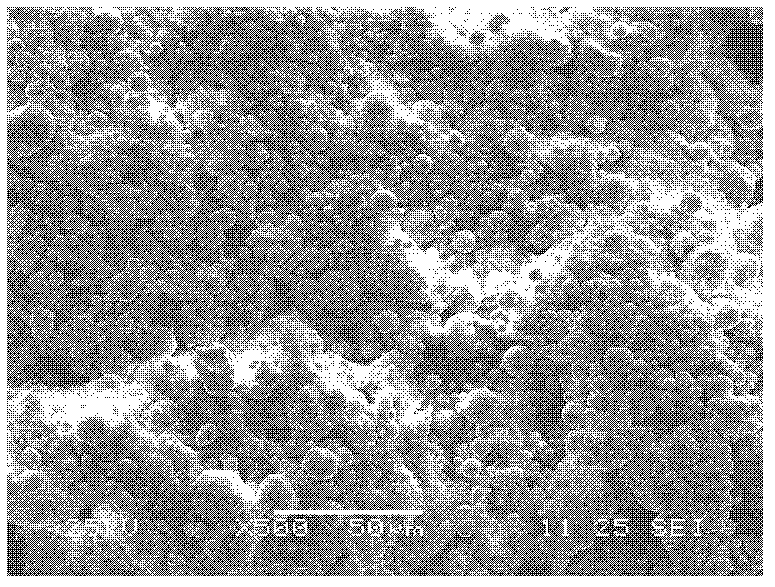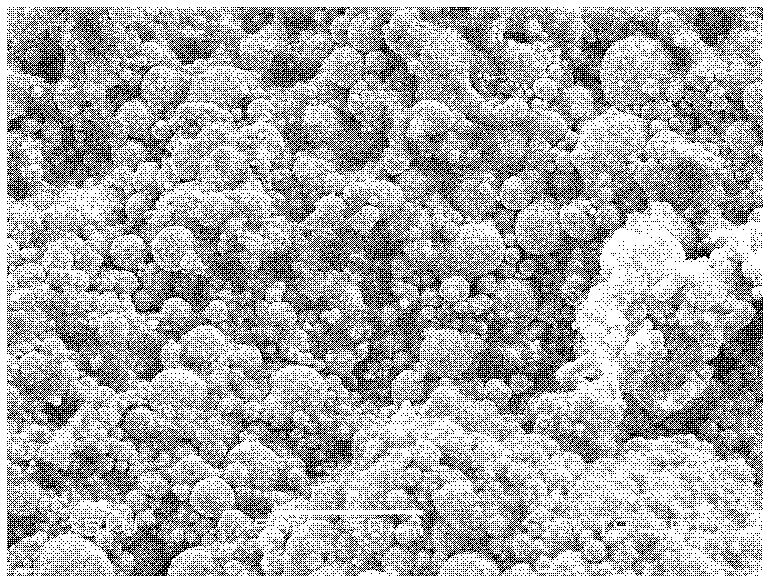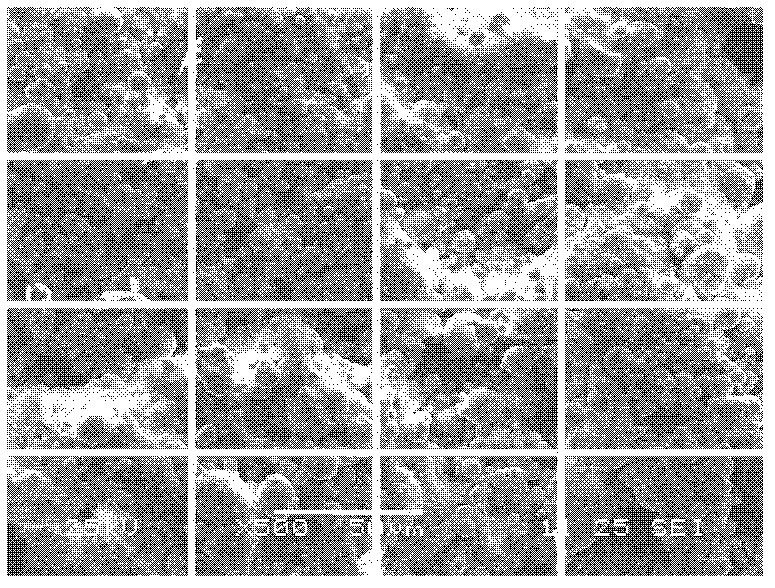Method for detecting uniformity of powder injection molded feed
A powder injection molding and uniformity technology, which is applied in the direction of material analysis using measurement of secondary emissions, can solve the problem of lack of quantitative judgment basis and judgment, and achieve the effects of convenient operation, short time-consuming and simple process
- Summary
- Abstract
- Description
- Claims
- Application Information
AI Technical Summary
Problems solved by technology
Method used
Image
Examples
Embodiment 1
[0047] Choose 17-4PH stainless steel feed, the powder loading of the feed is 55% (volume percentage), the binder is 5% stearic acid, 35% paraffin, 25% polymethacrylate, 35% polyethylene, select Feed 0.5g at 2 different positions for sample preparation. Then put it into a scanning electron microscope for observation, and obtain pictures such as figure 1 with figure 2 shown. Divide it into 16 parts with the same area according to Table 1, such as image 3 with Figure 4 shown. Then use Image-Pro Plus software to count 16 regions. The results obtained in the order of Table 1 are as follows: the statistical results of position 1 electron microscope photos: 72.3%, 71.2%, 55.3%, 52.2%, 65.5%, 57.8%, 78.4%, 81.3%, 57.2%, 51.7%, 51.3%, 79.2%, 73.1%, 85.3%, 54.3%, 55.6%; Statistical results of position 2 electron microscope photos: 52.5%, 58.6%, 61.2%, 60.9%, 59.9%, 53.5%, 55.6%, 55.8%, 60.5%, 68.5%, 52.6%, 50.2%, 51.6%, 58.6%, 56.8%, 61.3%. The statistical results of the elec...
Embodiment 2
[0055] Select Ti-6A1-4V feeding material, binder system is stearic acid 10%, vegetable oil 25%, polymethacrylate 30%, polypropylene 35%, and the powder loading of feeding is 70% (volume percentage ), select 1g each of feed materials from 2 different positions, and prepare samples. Then put it into a scanning electron microscope for observation, and obtain pictures such as Figure 5 with Image 6 shown. Divide it into 16 parts with the same area according to Table 1, such as Figure 7 with Figure 8 shown. Then use Leica QWin software to count 16 regions. The results obtained are as follows: Statistical results of electron microscope photos at position 1: 76.3%, 65.2%, 59.3%, 61.2%, 69.4%, 74.6%, 71.3%, 66.8%, 81.5%, 83.5%, 90.2%, 52.1%, 73.4% , 79.3%, 66.3%, 73.6%; Statistical results of position 2 electron microscope photos: 78.5%, 72.6%, 83.4%, 86.5%, 56.6%, 75.2%, 78.6%, 65.3%, 88.5%, 75.8%, 64.7% , 75.9%, 81.6%, 78.3%, 74.1%, 76.7%. The statistical results of the e...
Embodiment 3
[0061] Choose 93W-4Ni-3Fe feed, the binder system is stearic acid 5%, polyethylene glycol 15%, polymethacrylate 40%, polyethylene 40%, and the powder loading of the feed is 60% (Volume percent), select 3 g of feeding materials in 3 different positions, and sample preparation. Then put it into a scanning electron microscope for observation. Divide it into 16 parts with the same area according to Table 1. The 16 regions were then counted using NIH Image software. The obtained results are as follows: Statistical results of position 1 electron microscope photos: 66.1%, 61.4%, 59.6%, 92.5%, 86.4%, 62.5%, 50.6%, 53.4%, 54.6%, 37.3%, 74.6%, 79.2%, 49.3% , 58.5%, 62.1%, 68.2%; the statistical results of position 2 electron microscope photos: 45.4%, 76.2%, 62.2%, 68.4%, 57.5%, 73.1%, 81.2%, 83.5%, 79.3%, 50.1%, 56.5% , 59.1%, 65.7%, 78.3%, 80.2%, 33.9%; the statistical results of position 3 electron microscope photos: 65.4%, 86.1%, 64.5%, 38.7%, 77.2%, 70.2%, 51.3%, 64.5%, 59.4% , ...
PUM
 Login to View More
Login to View More Abstract
Description
Claims
Application Information
 Login to View More
Login to View More - R&D
- Intellectual Property
- Life Sciences
- Materials
- Tech Scout
- Unparalleled Data Quality
- Higher Quality Content
- 60% Fewer Hallucinations
Browse by: Latest US Patents, China's latest patents, Technical Efficacy Thesaurus, Application Domain, Technology Topic, Popular Technical Reports.
© 2025 PatSnap. All rights reserved.Legal|Privacy policy|Modern Slavery Act Transparency Statement|Sitemap|About US| Contact US: help@patsnap.com



